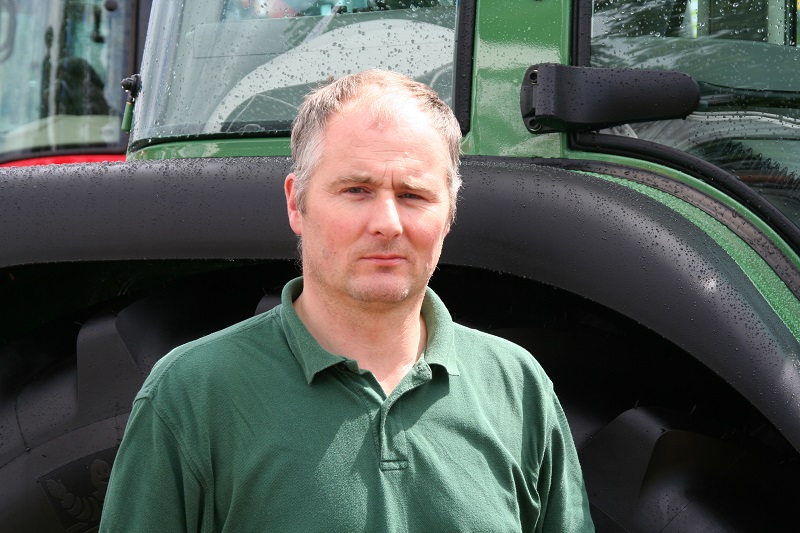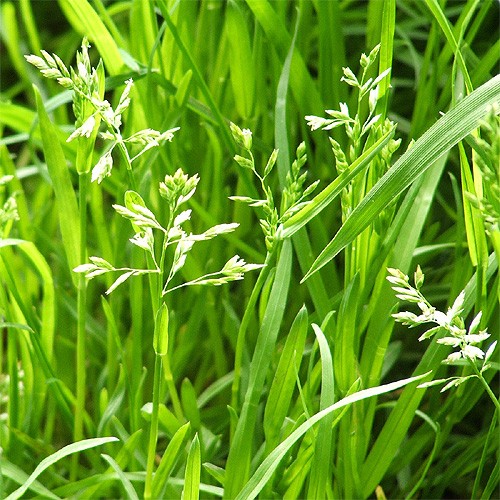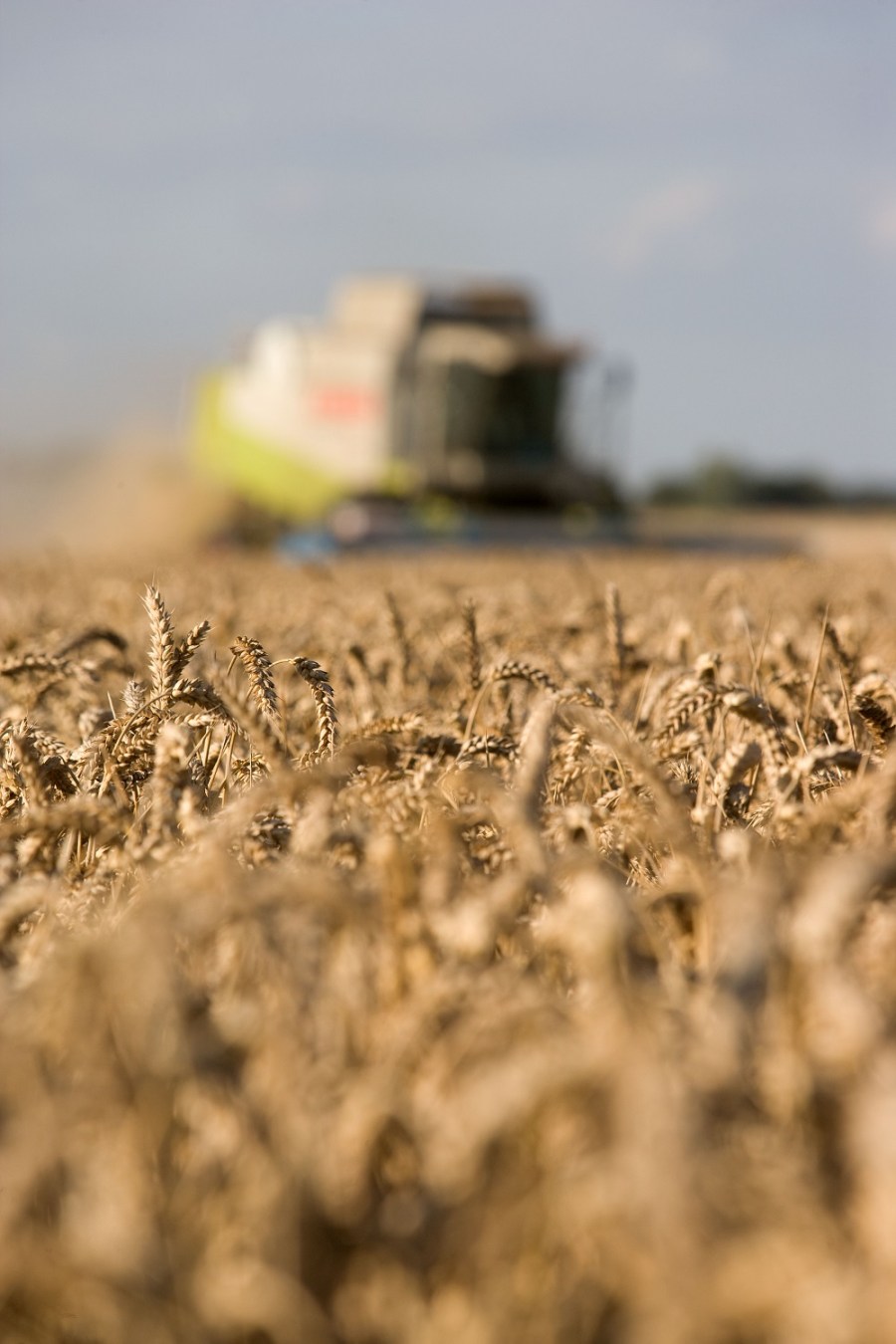Each year since its launch in 2012, the Yield Enhancement Network (YEN) has got bigger. CPM asks two northerly growers what it brings to the table.
I wanted to push the yield envelope and the YEN project makes me think outside of the box.
By Lucy de la Pasture
While yield is by no means everything, research suggests that yields achieved in practice fall short of their potential.
Undoubtedly there are many factors at play, some controllable and some not, but the Yield Enhancement Network (YEN) was created to help growers bridge the gap between actual and potential yield. It gives growers the opportunity to put some science behind their crop production and look more closely at what they’re doing, explains YEN member, David Fuller-Shapcott.

David Fuller-Shapcott identified possible fertility problems in wheat ears as a result of the crop report generated by YEN last season.
He farms a 240ha mixed enterprise near Kelso in the Scottish Borders, mostly arable but with 32ha in permanent pasture, used to finish pedigree Aberdeen-Angus cattle for the premium beef market. A further 200ha is farmed under rental and contract farming agreements.
Asked why he got involved with YEN, David Fuller-Shapcott’s response was instant. “Because I wanted to push the yield envelope and the YEN project makes me think outside of the box, question how we do things and how we can do things differently to get more yield. It’s both educational and constructive,” he says.
So what has his involvement in YEN brought to the table in terms of his farming practices?
“We’ve identified possible fertility problems in wheat ears as a result of the crop report which was generated by YEN last season. Tissue tests indicated low zinc levels but we didn’t do much with the results. This season we’ve done much more to monitor and correct zinc levels in the crop using regular tissue testing,” he explains.

Could annual meadow grass act in the same way as a companion crop if its control was left until the spring?
David Fuller-Shapcott’s membership has been sponsored by one of the YEN corporate sponsors, BASF. “As a consequence, I benefit from a second agronomist on the farm from BASF, which is great for generating discussion and bouncing ideas off one another,” he says, adding that challenging the way you approach things is an important part to working out how to do things better.
Cost of production
What’s more, he’s costed his YEN inputs and compared them to his input costs across the rest of the farm and they’ve come out favourably, resulting in a lower cost of production on a per tonne basis – another benefit from pushing the yield envelope.
One of the biggest challenges in his arable enterprise is achieving earliness and a late harvest has knock-on effects that feed through to subsequent seasons, he explains. With four fields of wheat still to harvest in the third week of Sept and spring crops to go on to, harvest is a much later affair than in the bread basket of England and at a time where day length is diminishing fast.
“This has been the first year that we’re clear of the effects of the late harvest in 2012. As a consequence of the difficult weather conditions that year, we couldn’t get some autumn crops in and even last year we had spring wheat in the ground, that ideally wouldn’t have been, which wasn’t cut until the third week of Oct.”
The rotation David aims for is oilseed rape, followed by two years of soft milling winter wheat. “The next crop in our five-year rotation is spring-sown malting barley, aimed at the malt-distilling market for whisky. Lastly, before returning to OSR, we have an autumn-sown crop of barley used in two ways – about half is used by a major Tyneside brewer for beer production, and the rest goes as pearling barley for use in soups and baby foods,” he explains.
Bronze medal
In spite of being in Border country, the yields achieved on the farm are very respectable, with a bronze medal spot in last year’s YEN competition for getting closest to the crops potential. This season yields are down but wheat is still coming off at over 12t/ha.
“I’m looking at tweaking our rotation to try to get autumn crops in earlier by increasing the winter barley area, so that the OSR goes in earlier and is earlier to harvest. Last year we got some wheat in early for us – by mid-Sept – and this was consequently harvested earlier, yielding in the region of 13-14t/ha. This autumn, ground conditions have prevented us from working the ground as early, which is pushing drilling back later again,” he says, with a bit of frustration.
“I want to min-till after OSR but this autumn it hasn’t been an option. There was a mat of annual meadow grass in the base of the OSR stubble, a consequence of not being able to get an autumn herbicide on in 2015. We had to plough the OSR stubble so turned up wet soil, which we’re now having to wait for.”
His soil is predominately heavy clay loam soils of the Whitsome association, technically described as having ‘impeded natural drainage’– that’s to say that it doesn’t dry out very fast, he says.
Adopting min-till before spring crops is another change to the ploughing regime that has traditionally taken place on the farm. “This should mean we can get spring crops in earlier which will benefit the whole rotation,” he reckons.
Spring weed control in his cereals is another idea he’s toying with. Something he’s able to consider because blackgrass isn’t a factor on his land, he says.
“I wasn’t able to get an autumn herbicide on some of the winter wheat last year and ended up applying Othello (diflufenican + iodosulfuron-methy-sodium+ mesosulfuron-methyl) in the spring, which worked really well.
“It got me thinking that if we could leave the weeds over the winter, they would act in the same way as a companion crop and their roots could benefit the soil structure. Any weeds could be killed off in the spring before they become competitive with the crop and their residues would supply an additional source of nutrients,” he suggests.
Brian Matheson is the most northerly YEN grower, farming on a medium sandy loam soil in the Black Isle in the North of Scotland. He runs a mixed enterprise of 332ha, with predominantly spring barley (190ha), grown for malting and certified seed, in rotation with OSR (25ha) and winter wheat (42ha). The farm also lets 35ha for potatoes and carrots and carries out the contracting for the carrot growing and operates a mobile grain-dressing service. In addition, 40ha of permanent pasture carry 140 Texel cross ewes and he has 100 over-wintered cattle on B&B from Nov-March.
Late harvest
His farm is 90m above sea level and the lateness of harvest in his part of the world also has knock-on effects on his planned rotation. Last year no OSR went in because it got too late to plant it. This season, OSR has found its way back into the rotation thanks to more average conditions, he says.
Winter wheat is a marginal crop at his Ballicherry Farm, which is also one of the AHDB Monitor farms. “Winter wheat makes up 15-20% of our cropping but our major market has recently disappeared, making the crop on the fringe of being economically viable for us to grow. Part of the reason for joining YEN was that we need to look at the yields we’re achieving and see how we can get the best out of the crop,” he says, adding that it’s a subject that generates good discussion within his Monitor farm group.
“As a result of our YEN involvement, we’re digging soil pits and looking at the profile – something we wouldn’t normally be doing. We’re also using more tissue testing and as a result, applying extra bittersalz (magnesium sulphate) and boron, along with other trace elements,” he explains.
AHDB’s Emily Smith points out there are a lot of synergies between the YEN concept and the Monitor Farms, a number of which have become YEN members under AHDB’s sponsorship.
“YEN helps growers interrogate their own management practices and see how small changes can produce large results. The Hereford Monitor farm has introduced a benchmarking element so that it’s possible to see how much extra yield is needed to make any change in inputs commercially viable.”
Over the season, a number of YEN regional workshops are held at Monitor farms around the country in conjunction with ADAS. The purpose is to dig into the detail of plant growth, the crop’s ability to capture light and water and keeping the canopy green for longer, she adds.
Getting the gen through YEN
The Yield Enhancement Network (YEN) is entirely an industry initiative with 15 commercial and research sponsors, explains ADAS research scientist, Dr Daniel Kindred. It connects agricultural organisations and farmers who are striving to improve crop yields and is open to any interested individual or organization – commercial, academic or other, he adds.
“The YEN provides a framework for growers to understand the limitations on yield and what the actual yield potential of the crop is. The ideas on how to remove these limitations are just as likely to come from YEN growers as they are from researchers.
“Innovators do things differently and we can all learn from them, which is what YEN is all about. The focus of YEN is driven by the network and the growers are the integrators (of research and practical application), pulling the whole system together,” he adds.
So what do growers get for their membership to YEN in addition to the regional meetings, ideas labs and the competition element, which culminates in an awards and results meeting in Nov?
“Each member gets a site-specific report which details information on their soil; including texture, analysis, organic matter and soil biology. This data tells us about the soil type and is used alongside Met Office data to generate the yield potential,” explains Daniel Kindred.
“The grower collects data at specific growth stages through the season, and uploads a photo to the YEN website after ear emergence. We analyse grab samples to determine yield components (grains per ear, individual grain weight and ears per square metre), harvest index, biomass, grain protein content, straw nitrogen concentration and nitrogen uptake,” he explains.
From this information, ADAS generates a report for the grower which tells him how the crop is performing and where the likely yield limitations will be, along with suggestions about how this may be improved.
David Fuller-Shapcott finds this report extremely useful. “There’s a lot of things about farming that you can’t change. By that I mean things like your soil type and the weather. The motto of my local agricultural society sums the principle of YEN up nicely – ‘It’s no what ye hae, it’s what ye dae wi what ye hae.’




